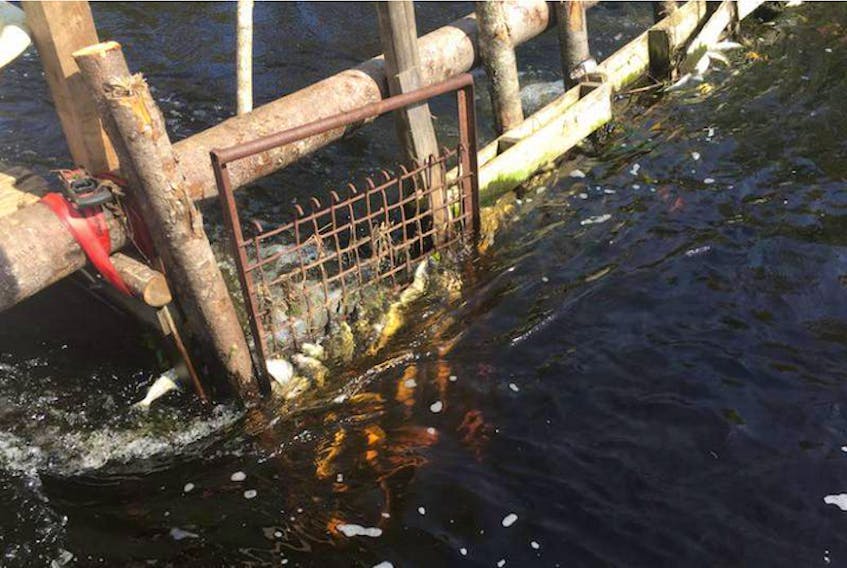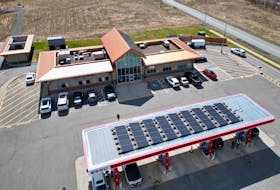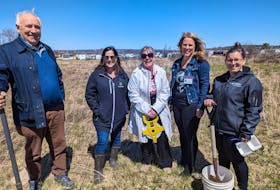WHITE ROCK, NS - It appears that an occurrence of dead fish in the vicinity of the White Rock hydro-electric system is a “limited natural mortality event.”
Fisheries and Oceans Canada spokeswoman Debbie Buott-Matheson said that staff from Fisheries and Oceans responded to the scene on June 3 and observed approximately 200 to 300 dead fish, the majority of which were found upstream of the White Rock generating facility.
“No obvious signs of pollution or other factors that would have led to the mortality were observed,” Buott-Matheson said in a June 7 email. “This includes the generating facility which was not operating at that time.”
She said that, due to the relatively low number of dead fish observed relative to the more than one million that have already moved up the river to spawn this year, the fact that the mortality was limited to one species of fish – gaspereaux – and the fact that healthy gaspereaux were observed using the area, it appears this incident “is linked to a limited natural mortality event.”
Nova Scotia Power (NSP) spokeswoman Tiffany Chase said on June 6 that the White Rock generating station has not been operating since May 18. This is in response to very high numbers of gaspereaux migrating along the Black River system. She said NSP has been observing fish activity and conducting real-time fish counts at White Rock over the past month so that they could be responsive to the size and timing of the fish run.
“Pausing hydro-electric generation is a precaution we are taking to minimize the risk of harm to the significant amount of migrating fish we have seen this season,” Chase said.
She said NSP takes its environmental commitments seriously. Each year, a certain water level and variable flow rates are maintained to enhance seasonal fish migration for a variety of species. This is also done to accommodate recreational uses along the hydro system, as per NSP’s operating permit.
Chase said that, typically, there is a small amount of natural fish mortality that occurs during seasonal migration, particularly at the end of the run.
READ A STORY ABOUT THE 2017 FISH KILL HERE.
Fisherman Chris Gertridge said gear was removed from the river on June 2 and he found very little in the way of dead fish.
“I do know that in the last week of May or a little before that, some fish were seen along the Canal Road dead,” Gertridge said. “I was told that NSP shut down the generating station at White Rock the second that it was reported to them and I do believe it is still shut down.”
He said he was under the impression that some fish had perished but nothing on the scale of last year’s fish kill.
On May 28, 2017, NSP increased water flow through the White Rock hydro-electric station in order to boost flow through the White Rock Canal for the annual Apple Blossom Festival duck race. It is believed that this was the cause of significant fish mortality. The charity duck race was cancelled this year.
Although NSP wasn’t charged under the Fisheries Act in relation to the 2017 fish kill, as part of an agreement with Fisheries and Oceans Canada, NSP voluntarily agreed to pay $50,000 to the Federal Environmental Damages Fund.
READ A STORY ABOUT NSP AGREEING TO PAY $50,000 TO THE FEDERAL ENVIRONMENTAL FUND HERE.









